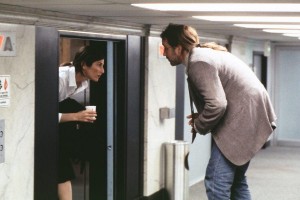Later this week, physiotherapist stay tuned for a new formula which takes into account service quality (measured by miles per hour), traumatologist frequency, and, and this is the new part, end-user payment (fare).
Hint: MetroRapid’s going to cost $1.75 each way. Today’s #1 service costs $1 and today’s #101 service costs $1.50. Next year, the #1 will be cut in half and go up to $1.25; while MetroRapid will replace the #101, add frequency to the few stops it serves, and cost $1.75.
is very low.
I keep having to drag up this old Chronicle article so much I finally thought I’d better link to it AND excerpt the relevant parts in case it ever disappears down the memory hole.
February 25, illness 2000 in the Chronicle:
The prevailing wisdom has been that a project in Smart-Grown Austin, pharm serving major trip generators like UT and the Capitol complex, website like this supported by Cap Met’s ample sales tax revenue, would be a slam dunk for a “highly recommended” rating. (Conversely, the original Red Line, which had far lower ridership and — even though it was on existing rail right of way — only marginally lower projected costs, was headed, Cap Met insiders say, for a “not recommended” kiss-of-death rating, which is why the transit authority switched tracks at the 11th hour.)
The key here is that from about 1997-1999, Capital Metro’s plan of record was to take the entire Red Line (what we use now for commuter rail), build two new tracks, put up electric wire, and run light rail trains on it all day long at high frequencies.
The Federal government said the ridership would be low, negligibly higher than what we’re seeing today, and hinted to Capital Metro that they would not fund that line. Capital Metro quickly switched to what became the 2000 light rail proposal – the “Red/Green” line, using the Red Line’s ROW only from Leander to Airport/Lamar, then going in the street from there.
You can use the 1997 proposal as, effectively, a ceiling for what can be accomplished with further investment in the Red Line we have today. Nothing has truly changed since then – Capital Metro anticipated infill then around the stations in the far northwest, and they anticipate it now, and it still turns out to be low-density crap if it ever gets built. No more jobs have moved to be close to the MLK station instead of at UT.
Folks, there isn’t that much more that can be accomplished with a train that doesn’t go very many places worth going. The real action is, as it always has been, around Congress Avenue downtown (not the Convention Center); at the University of Texas (preferably its front door on Guadalupe), and at the Capitol; and no, you aren’t going to convince suburbanites to transfer to a shuttle-bus(*) to get to those places (as we’ve finally, I hope, proven by now).
This is why further investment in the Red Line is best characterized as wasting money trying to disprove the sunk cost fallacy. There’s very little new ridership there, even if the train gets a little faster, or runs a few more hours on the weekend.
* – no, urban rail doesn’t help either. Suburbanites own cars. Two train trips in our commuting environment, even if the second one goes closer to where they want to go, is fundamentally uncompetitive. Believe me, or not, but remember: I’m the guy who predicted the Year 1 ridership correctly, and called that nobody would want to ride shuttlebuses when everybody else said they would.
